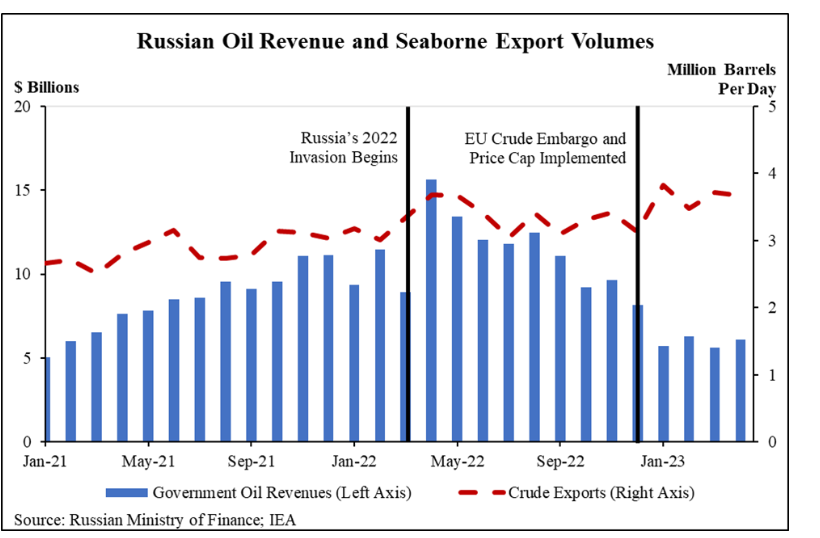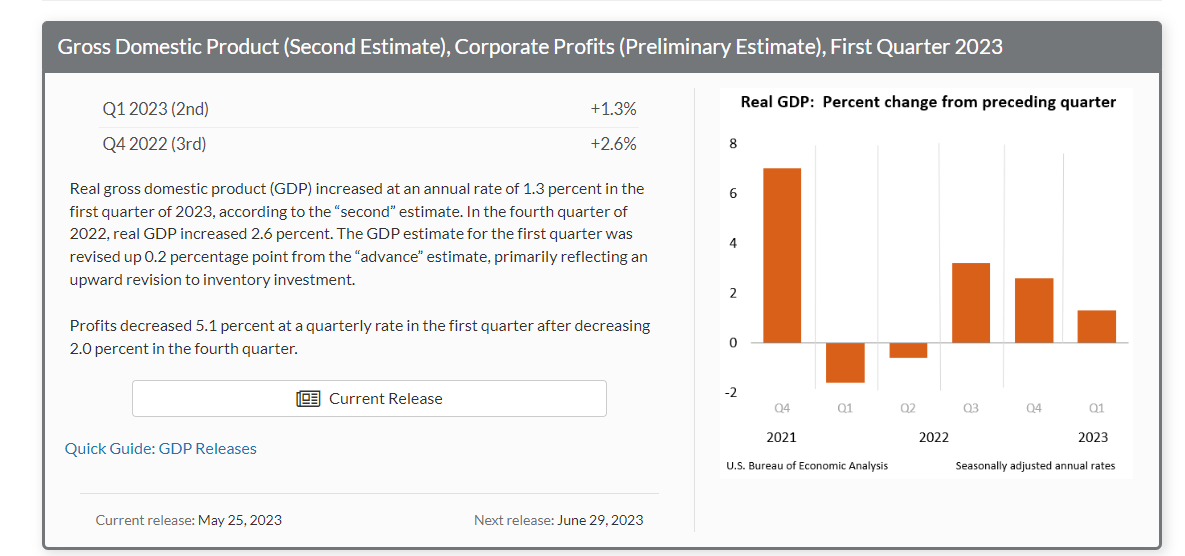Gasoline Futures Plunge, Saudi-Russo Discord Dampens Rally

So much for the Memorial Day rally? Gasoline futures are dropping nearly 7 cents/gallon in the early going this morning, leading the energy complex lower, and wiping out the strong gains we saw Wednesday. Diesel prices are down 4 cents so far and are now just a penny away from wiping out their gains for the week. Prices did recover some of their early losses following the Q1 GDP estimate that came in slightly above earlier guesses, and showed the US economy continues to see modest growth despite all of the recession warnings.
A day after the Saudi Oil minister threatened speculators shorting oil prices, a Russian official downplayed the chances of OPEC & friends agreeing to another output cut at its meeting next week, which seems to have sent some of the bullish bandwagon jumpers back to the sidelines.
The DOE reported a surge in the estimated demand for gasoline and diesel last week, which pushed inventories to new lows for the year, with gasoline stocks now at their lowest seasonal level in more than 6 years. While the weekly demand estimates are notoriously volatile (aka unreliable) the diesel reading touched its 2nd highest level of the year and offered hope for producers who have been languishing under some of the worst seasonal consumption that we’ve seen in decades.
What a difference a year makes: This time last year distillate cracks were spiking north of $70/barrel, some $25/barrel more than gasoline, incenting refiners to maximize diesel output. This year, gasoline cracks are rallying to a 10-month high and are trading $8/barrel over diesel values. The forward curve still favors diesel output long term and shows profitable run-rates for refiners for the next 2 years, albeit at much more modest levels than the records we’ve seen set over the prior 12 months.
Oil inventories saw a huge decline of more than 12 million barrels last week, despite another SPR release of 1.5 million barrels. The EIA’s adjustment factor was at play again, with a reduction in the fudge factor accounting for 8 million barrels of the drop, while a big decrease in imports accounted for another 7-million-barrel decline last week, while exports held strong north of 4-million barrels/day.
Refinery runs ticked slightly higher for a 2nd week, and continue to hold near year-ago levels, and should continue to ramp up as a busy spring maintenance season comes to an end. The main impediment to seeing refiners reach maximum run rates in June appears to be the rash of fires that have been breaking out lately. It’s not just US refiners that are struggling with fires, multiple refineries in Mexico have had multiple issues in the past week, further complicating the issues we saw back in February when 3 fires broke out on the same day.
Game change or pipe dream? Plans to build a 250mb/day oil refinery near the WTI delivery hub in Cushing OK were announced this week, with the facility claiming to operate on Hydrogen and Oxygen fuel sources that managers claim will reduce emissions by 95%. IF the project moves forward, construction is scheduled to start in 2024, with the first potential for supply starting in 2027.
The US Treasury published a progress report on the Russian Oil price cap last week, taking a page out of the DOE’s SPR playbook and patting itself on the back for a job well done. A Bloomberg article this morning details how India and China are the main beneficiaries of that plan.
Click here to download a PDF of today's TACenergy Market Talk.
Latest Posts
After Years Of Backwardation, Diesel Prices Have Slipped Into Contango Over The Past Week
Gasoline Futures Are Leading The Way Lower This Morning
The Sell-Off Continues In Energy Markets, RBOB Gasoline Futures Are Now Down Nearly 13 Cents In The Past Two Days
Week 15 - US DOE Inventory Recap
Social Media
News & Views
View All
After Years Of Backwardation, Diesel Prices Have Slipped Into Contango Over The Past Week
The pullback continues for energy prices as violence in the Middle East looks like it won’t rapidly expand, and financial markets continue to struggle with a higher-for-longer interest rate reality.
After years of backwardation, diesel prices have slipped into contango over the past week, despite multiple canal disruption concerns of reduced exports coming out of Russia. A Reuters article highlights how sluggish demand in Europe, and a glut of Asian supply [thanks to the rapid influx of new refining capacity over the past 2 years] is contributing to the changing market structure. This sudden weakness in diesel is also leading many refiners to reconsider their max-diesel output stance that had been key to their record setting margins in 2022 and 2023.
Money managers were reducing their bets on higher energy prices last week, in what appears to be an unwind of the positions added the prior week when it seemed like we might have an all-out war between Israel and Iran. The exception to the reduction in speculative length was the Brent crude oil contract which saw its money manager positions increase for a 4th week to reach a 3-year high. Open interest in crude oil contracts is also increasing to multi-year highs as new money flows into the energy space as a hedge of both inflation and geopolitical concerns, which could contribute to a tick higher in volatility if the sell-off continues this week as the bandwagon jumpers may soon be looking for a new ride.
Baker Hughes reported a net increase of 5 oil rigs drilling in the US last week, while natural gas rigs dropped by 2 on the week to a fresh 2 year low. The Permian basin has quietly added 8 more rigs in the past 4 weeks as producers in that region try to find a way around the shipping bottlenecks to get their otherwise profitable production to market. An RBN note last week highlighted how the lack of natural gas pipeline capacity will limit crude oil production capacity in the basin, and Kinder Morgan highlighted the need for another pipe in its latest earnings call.
Valero reported an upset at its Corpus Christi West refinery Saturday, although it appears that the brief flaring didn’t reduce operational levels.
Click here to download a PDF of today's TACenergy Market Talk.

Gasoline Futures Are Leading The Way Lower This Morning
It was a volatile night for markets around the world as Israel reportedly launched a direct strike against Iran. Many global markets, from equities to currencies to commodities saw big swings as traders initially braced for the worst, then reversed course rapidly once Iran indicated that it was not planning to retaliate. Refined products spiked following the initial reports, with ULSD futures up 11 cents and RBOB up 7 at their highest, only to reverse to losses this morning. Equities saw similar moves in reverse overnight as a flight to safety trade soon gave way to a sigh of relief recovery.
Gasoline futures are leading the way lower this morning, adding to the argument that we may have seen the spring peak in prices a week ago, unless some actual disruption pops up in the coming weeks. The longer term up-trend is still intact and sets a near-term target to the downside roughly 9 cents below current values. ULSD meanwhile is just a nickel away from setting new lows for the year, which would open up a technical trap door for prices to slide another 30 cents as we move towards summer.
A Reuters report this morning suggests that the EPA is ready to announce another temporary waiver of smog-prevention rules that will allow E15 sales this summer as political winds continue to prove stronger than any legitimate environmental agenda. RIN prices had stabilized around 45 cents/RIN for D4 and D6 credits this week and are already trading a penny lower following this report.
Delek’s Big Spring refinery reported maintenance on an FCC unit that would require 3 days of work. That facility, along with several others across TX, have had numerous issues ever since the deep freeze events in 2021 and 2024 did widespread damage. Meanwhile, overnight storms across the Midwest caused at least one terminal to be knocked offline in the St. Louis area, but so far no refinery upsets have been reported.
Meanwhile, in Russia: Refiners are apparently installing anti-drone nets to protect their facilities since apparently their sling shots stopped working.
Click here to download a PDF of today's TACenergy Market Talk.

The Sell-Off Continues In Energy Markets, RBOB Gasoline Futures Are Now Down Nearly 13 Cents In The Past Two Days
The sell-off continues in energy markets. RBOB gasoline futures are now down nearly 13 cents in the past two days, and have fallen 16 cents from a week ago, leading to questions about whether or not we’ve seen the seasonal peak in gasoline prices. ULSD futures are also coming under heavy selling pressure, dropping 15 cents so far this week and are trading at their lowest level since January 3rd.
The drop on the weekly chart certainly takes away the upside momentum for gasoline that still favored a run at the $3 mark just a few days ago, but the longer term up-trend that helped propel a 90-cent increase since mid-December is still intact as long as prices stay above the $2.60 mark for the next week. If diesel prices break below $2.50 there’s a strong possibility that we see another 30 cent price drop in the next couple of weeks.
An unwind of long positions after Iran’s attack on Israel was swatted out of the sky without further escalation (so far anyway) and reports that Russia is resuming refinery runs, both seeming to be contributing factors to the sharp pullback in prices.
Along with the uncertainty about where the next attacks may or may not occur, and if they will have any meaningful impact on supply, come no shortage of rumors about potential SPR releases or how OPEC might respond to the crisis. The only thing that’s certain at this point, is that there’s much more spare capacity for both oil production and refining now than there was 2 years ago, which seems to be helping keep a lid on prices despite so much tension.
In addition, for those that remember the chaos in oil markets 50 years ago sparked by similar events in and around Israel, read this note from the NY Times on why things are different this time around.
The DOE’s weekly status report was largely ignored in the midst of the big sell-off Wednesday, with few noteworthy items in the report.
Diesel demand did see a strong recovery from last week’s throwaway figure that proves the vulnerability of the weekly estimates, particularly the week after a holiday, but that did nothing to slow the sell-off in ULSD futures.
Perhaps the biggest next of the week was that the agency made its seasonal changes to nameplate refining capacity as facilities emerged from their spring maintenance.
PADD 2 saw an increase of 36mb/day, and PADD 3 increased by 72mb/day, both of which set new records for regional capacity. PADD 5 meanwhile continued its slow-motion decline, losing another 30mb/day of capacity as California’s war of attrition against the industry continues. It’s worth noting that given the glacial pace of EIA reporting on the topic, we’re unlikely to see the impact of Rodeo’s conversion in the official numbers until next year.
Speaking of which, if you believe the PADD 5 diesel chart below that suggests the region is running out of the fuel, when in fact there’s an excess in most local markets, you haven’t been paying attention. Gasoline inventories on the West Coast however do appear consistent with reality as less refining output and a lack of resupply options both continue to create headaches for suppliers.




